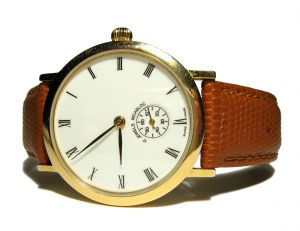As most people know Swatch AG is a Swiss corporation that sells watches, clocks and jewelry. It owns three United States registrations for the trademark SWATCH. It filed a Notice of Opposition against Beehive Wholesale, L.L.C. Beehive is in the wholesale and retail business, selling multiple goods, including watches and watch parts. It sells these watch parts and products under the trademark SWAP. Beehive’s watch line includes interchangeable components, hence the mark SWAP. Swatch AG opposed Beehive’s application on the grounds of mere descriptiveness, likelihood of confusion, and dilution. The Trademark Trial and Appeal Board (“TTAB”) dismissed the opposition on all counts.
 Swatch dissatisfied with the Board’s finding, sued in District Court in Virginia. See Swatch, S.A. v. Beehive Wholesale, L.L.C., Civil Action Number 1:11-cv-434 (E.D. Va. August 16, 2012). Swatch filed this civil action pursuant to §1071(b) of Title 15 of the United States Code. This section allows a trademark litigant to file a civil action instead of filing an appeal of the TTAB decision with the Federal Circuit. In this type of action, the District Court reviews the matter de novo.
Swatch dissatisfied with the Board’s finding, sued in District Court in Virginia. See Swatch, S.A. v. Beehive Wholesale, L.L.C., Civil Action Number 1:11-cv-434 (E.D. Va. August 16, 2012). Swatch filed this civil action pursuant to §1071(b) of Title 15 of the United States Code. This section allows a trademark litigant to file a civil action instead of filing an appeal of the TTAB decision with the Federal Circuit. In this type of action, the District Court reviews the matter de novo.
Swatch brought causes of action for trademark infringement and unfair competition under federal and state statutes and also a federal cause of action for dilution. The District Court of Virginia held that the TTAB’s decision was supported by substantial evidence and found no likelihood of confusion or dilution. The TTAB and the District Court held that the marks SWATCH and SWAP were dissimilar in sight, sound and meaning and this was supported by substantial evidence. The evidence relied on were the trademarks, as well as definitions from the dictionary. Swatch argued that the District Court did not give enough weight to the “SWA” portion of the mark. However, this was not a persuasive argument because the analysis requires the fact finder to compare whole words not parts of words. Lastly, The TTAB, as well as the District Court found that there were significant differences in trade channels for the two marks. Beehive directed its advertising to wholesale customers through magazines and trade show appearances, while Swatch utilized television, social media and billboards primarily to conduct advertising. Swatch was unable to produce a single incident of actual consumer confusion about the origin of the parties. The absence of actual confusion creates an inference that there is no likelihood of confusion between the marks.
 New York Trademark Attorney Blog
New York Trademark Attorney Blog

